Insights
Where Do Memes Come From? The Top Platforms From 2010-2022
From the rise of TikTok to the fall of Tumblr, from the green-texted halls of 4chan to the doomed paradise of Vine, from the most boomer Facebook page to the most niche Gen Z Instagram account, Know Your Meme has seen it all.
But what does it all mean?
In many ways, the history of internet culture has yet to be told. It all happened fairly recently and the internet can be difficult to analyze. It's enormous, records get deleted quickly and platforms are less than transparent about how decisions get made and algorithms function.
But this history needs to be told, because it's the story of our lives. The social web is everywhere — by our bedsides as we wake, in our pockets as we walk around, at our workplaces when we're pretending to be productive, in our intrusive thoughts, at the table during family dinner and even in our dreams.
Somehow, a place where you could post funny faces on image forums transformed into a place where people will pay a million dollars for a picture of a monkey they can’t even hold in their hands. It's important to know how that happened, so let's take a look at the internet's evolution, as seen through memes, over the last decade-plus.

Breaking Down A Decade-Plus Of Meme Origin Data
By looking at the number of memes recorded for each platform by Know Your Meme annually, we can follow the rise and fall of different social media platforms and gauge their relative influence over digital culture at different moments in their history. Through memes, we can help to tell the story of the social internet and how it became what we see today.
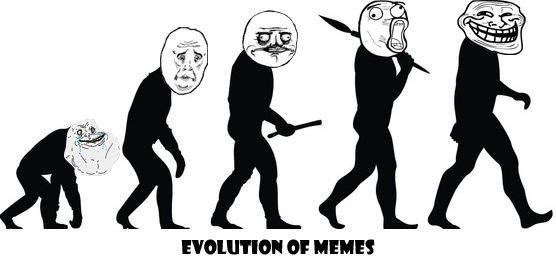
Using numbers from our database on entry origins, we produced charts showing the top platforms memes originated on from 2010 onwards. For the purposes of this investigation, we sampled 700-1,400 memes each year.
Our archival methods are generally effective, but not perfect, as sometimes we are unable to find an origin (either because it's been deleted or is inaccessible) and sometimes we also miss a meme or misattribute them to only the first known origin. That being said, we spent time cleaning things up and filtering out any inconsistencies.
The internet you logged into in 2012 or even 2019 is not the same place as the one you're browsing right now. Hopefully, these charts and data can tell part of the story of how and why it changed. So without further ado, let's jump into the world of memes circa 2010 and work our way up to the present day.

Where Did Memes Come From In 2010?

The lion’s share of meme origins recorded on the site in 2010 come from YouTube and 4chan. YouTube, launched in 2005, is one of the most iconic social sharing sites out there — it's the site that arguably taught everyone what "viral" meant.
4chan, on the other hand, has always had a more limited appeal, frequented by people who typically do not wish to participate in the "normie" world. Many meme formats – and, arguably, the sense of humor and “edginess” foundational to meme culture – began with 4chan and its countercultural posture.

But while neither 4chan nor YouTube are quite as prominent today as they were in 2010, the largest difference between the memescape then and the memescape now is in the importance of smaller websites. Notice the number of thin slices at the top of the chart. Together, these constitute a pretty big chunk of what was out there circa 2010.
The more decentralized internet of 2010 is represented by these small slices devoted to sites like MemeGenerator (which provided the tools people needed to make memes if they didn’t have Photoshop or other apps) and Niconico, an imageboard devoted to Japanese anime. Other significant forums include 9GAG, Cuánto Cabrón and FunnyJunk.
2010 Meme Spotlight: Rage Comics
Rage Comics are probably the most iconic type of meme from the early eras. They are an ensemble of faces in a stock comic strip format, free to exploit and adapt by anyone. The faces are sort of like stock characters — archetypes like the "dumb husband" and "loose cannon cop" that are deployed by TV writers just like how Yao Ming Face and le Me were deployed by memers, or Odysseus and Agamemnon were deployed by traveling bards at the banquet-halls and public festivals of Ancient Greece.
In fact, Rage Comics, like the oral tradition which produced the Iliad, are still vibrant and alive, albeit in forms their original creators might never have anticipated: memes like Cover Yourself in Oil have kept the story of Rage Comics developing into the TikTok era, while social media accounts like Twitter's ancient memes (@OldMemeArchive) with nearly a million followers continue to repost and share the classics to a wide audience.

But while Rage Comics have continued to evolve, they remain a vintage product of an internet that no longer exists. The online communities that Rage Comics flourished within during the 2000s and 2010s were deeply supportive, collaborative and much smaller than today's social media platforms. Users gave others the tools to make their own comics, and the threads around these original memes are full of compliments and constructive criticism.
Where Did Memes Come From In 2011?

The biggest trend in 2011 seems to be the increased meme share distribution on Reddit and Tumblr. Reddit's use of subreddits catering to niche interests bears some similarity to the various boards on 4chan.
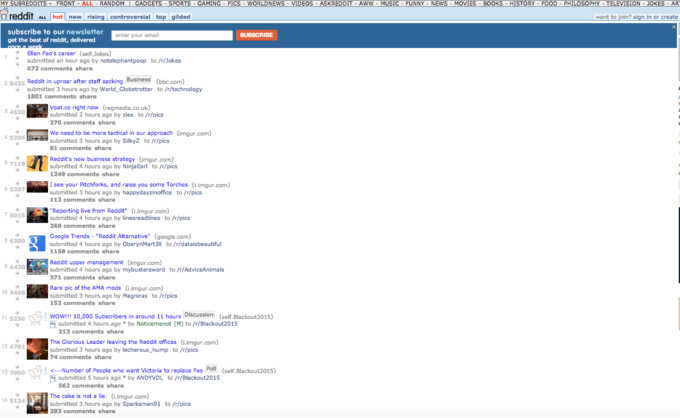
What distinguishes Reddit from sites like 4chan is its total anonymity and radically democratic structure. On 4chan, all speech is equal to all other speech. Comments and posts aren’t stacked and arranged in the newsfeed according to how popular or relevant they are to you personally, but based solely on how recent they are. Everybody on 4chan is in the herd.
2011 Meme Spotlight: Scumbag Steve
Scumbag Steve, whose real name is Blake Boston, is an iconic Advice Animal meme that debuted on Reddit in January 2011. He swept onto the scene at seemingly the perfect time. In 2011, Google search interest in Advice Animals peaked, and Scumbag Steve notably participated in that trend.

Like Rage Comics, Advice Animals were a cast of characters that memers could remix and deploy into a variety of situations. However, Advice Animals abandoned the comic strip format in favor of a swifter and more condensed presentation. The top text set up a joke while the bottom text delivered a punch line. Rather than the four-panel format of most classic Rage Comics, Advice Animals opted for a two-line format.
Advice Animals also differ from Rage Comics in the way they get made. The raw materials of the memes tend to be found photographs, screencaps or professional illustrations rather than crude drawings. The general skew of their humor is also the opposite of Rage Comics: Advice Animals tend to be funny because of their broad relatability, while Rage Comics succeed because they don't make sense, are cryptic or bizarre and mirror the specific eccentricities and preferences of the communities they emerge from.
In the following days and weeks after the initial Reddit post Scumbag Steve appeared in, Scumbagsteve.com was registered, BuzzFeed and other publications ran stories about the meme, MemeGenerator and Quickmeme saw tens of thousands of Scumbag Steve creations and memers even later placed him and his signature hat on figures as diverse as former Egyptian dictator Hosni Mubarak and a Renaissance boy, deploying the meme to places far outside its original context.


Where Did Memes Come From In 2012?

Continuing on, 2012 saw an increase in the share of meme origins held by Tumblr, Reddit and Facebook. The chart shows a decrease in the share of memes generated by smaller sites, but YouTube, the number one source of origin, is far from being a monolith. Overall, the situation is similar to 2011 and 2010. Reddit is an equal to 4chan, while Tumblr comes in not too far behind.
Tumblr users post about their interests, and the appearance of content on the site is determined through an algorithm placing suggestions and by user interaction (highly liked posts appear on more feeds). What makes Tumblr unique is the interconnected web of users that, once immersed, can provide a highly curated feed targeting specific interests and communities.
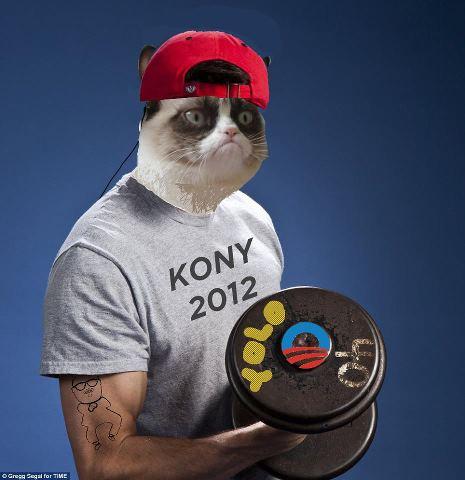
Reddit and 4chan could be understood as aggregators that brought together all of the smaller sites and forums frequented in the very early internet into one salad. They tossed together the forums where people discussed politics, My Little Pony and memes into one larger site. For the most part, they rely on people consciously sorting and directing themselves.
But platforms like Twitter and Tumblr are another thing entirely. Rather than a salad, they are like a blended smoothie. They rely increasingly on their own capacity to sort people and direct attention, gambling they can do it better than people themselves can.
2012 Meme Spotlight: Gangnam Style
Gangnam Style exploded like a bomb across the cultural scene of 2012. At a time when YouTube dominated meme origins and the internet was just starting to drive the cultural conversation, PSY and his collaborators leaned heavily into an absurdist video with an uncannily compelling dance move at its center. Clocking in at almost 4.5 billion views, the music video is likely rivaled only by particular religious texts as the most widely consumed piece of media in human history.
A major component of Gangnam Style's momentum was how fun it was to share the way you felt about it. Everybody from individual YouTubers filming reaction videos to mainstream media outlets writing breathlessly about PSY seemed to revel in the spectacle of their own response and the responses of others. A major part of the video's appeal wasn't just in watching it, but in showing it or having it shown to you.
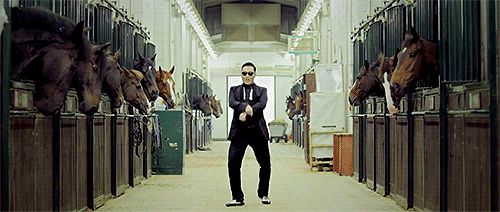
PSY Doing the "Horse Riding Dance" in the "Gangnam Style" music video.
Gangnam Style benefited most of all from a flood of coverage by legacy media outlets around the world, which likely saw a good opportunity to drive traffic to their websites. But it also made waves on Twitter, as Psy's antics attracted the attention (and reactions) of major musicians like Justin Bieber and memers who connected his triumph to that year's rumored Mayan Apocalypse.
Where Did Memes Come From In 2013?

In 2013, Tumblr supplanted YouTube as the biggest source of meme origins for the site, and anecdotally, this tracks. For many, the era of 2013-2015 was "peak Tumblr." The vibe of Tumblr memes tends to be well-read, a little esoteric, artsy and good-natured. Like 4chan, Tumblr was defined by its loose and permissive norms.
Structurally, Tumblr carries many of the same features as Twitter. You can like something, repost something, post a reply to it and react to other people's replies. Content appears in a big pool and is tied to specific posters.
The micro-blogging site was notably purchased by Yahoo! in 2013, but following a failure to generate ad revenue, was sold at a loss in 2016. The decline of Tumblr seemed irreversible in 2018 when the site infamously banned adult content and lost a big chunk of its user base.
An important difference between Tumblr and other follower-based platforms, however, is how follower counts are hidden. Tumblr orients users to go to other users for content, but it arguably encourages less of a celebrity model than those other platforms by not quantifying clout. In addition to not making follower counts public information, etiquette on Tumblr dictates that people generally not post under their real names, unlike Twitter or Facebook.
2013 Meme Spotlight: Side-Eyeing Chloe
A meme that might represent 2013 is Side-Eyeing Chloe, an image of a little girl reacting disdainfully to her sister's tearful response to a promised Disneyland trip. Perhaps presaging the internet's later fascination with Disney Adults, Chloe's reaction to her sister's tears of joy was seen as highly relatable.

The images come from a YouTube video uploaded by the parents of the girls in 2013, but Chloe's face became a meme a week later on Tumblr. She came to be deeply associated with that platform, frequently used as a reaction image, and BuzzFeed went so far as to call her the patron saint of Tumblr. Edits of Chloe's face superimposed onto other bodies also featured prominently during its heyday.
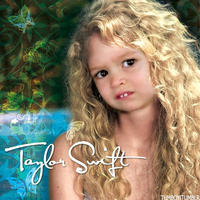
Buzzfeed wasn't the only outlet to pay attention to Chloe. Like with Gangnam Style, the vigorous involvement of the media in the spread of Side-Eyeing Chloe is a marker of meme culture's ascent into the mainstream. Paired with the continuing decline in influence of the more abrasive and controversial 4chan, it seems clear that sometime in Barack Obama's second term, memes ceased to belong to the niche creative fringe.
Where Did Memes Come From In 2014?

The year 2014 saw the full emergence of Vine, the video-sharing platform which walked so TikTok could run. Vine remains notably foundational to zoomer culture to this day.
The idea of Vine is probably one of the best elevator pitches of all time — a video-sharing social media app combining YouTube's range and algorithmic firepower with Twitter's signature length limit (six seconds for video in the place of 140 characters for text). The result was a platform full of snippet-sized content that quickly became home to some of the most vibrant and wacky content on the web. However, Vine's parent company Twitter, which acquired it in October 2012 before its official release in January 2013, never figured out how to monetize the app.
It ultimately passed away in 2016, but not before it left its mark on internet culture. While the platform existed, many chose to Do It For The Vine, and that sentiment still lives on to this day.
Speaking of Twitter, 2014 saw Twitter take the throne as the top source of meme origins, a seat it would not surrender for many years. Twitter's position remains increasingly central in part because of its relationship to the types of media that pre-exist the online platforms: Twitter became the social media site of choice for many journalists, entertainers and cultural figures.
The kinds of conversations these media elite people used to have through journals, papers, books and films started taking place on Twitter, attracting a large number of their fans and the attention of the traditional press. Following a 2011 site redesign that created the "Discover" tab (which aggregated trending topics and organized the chatter around them), Twitter optimized itself for breaking news developments.

Twitter became the first landing site for many memes that came from other kinds of media. Screencaps of movies and TV shows ended up on Twitter, often used as reaction images and GIFs. Memes from live televised events tended to take root on Twitter first as well, often while they were still airing. The number one meme origin position assumed by Twitter arguably represents not just the creativity on the platform, but its role as a bridge between the purely online world and the in-real-life media world.
2014 Meme Spotlight: The Ice Bucket Challenge
If you were in the U.S. in 2014, odds are that you (or somebody you knew) dumped a bucket of ice water on your head and filmed it for social media. The Ice Bucket Challenge social game and internet challenge began among professional athletes who got on the bandwagon in June 2014 on Instagram and particularly YouTube.
The rules of the challenge were simple: Film yourself pouring ice-cold water over your head, donate to a charity and then challenge others to do the same. At first, it could be any charity, but over time, the challenge evolved so that it had to be a charity researching ALS. The challenge resulted in charities like the ALS Association raising over $100 million in the summer of 2014, significantly more than the $3 million they had raised the summer before.
The challenge not only made people feel good about themselves for helping a cause (accusations of slacktivism aside), but it also made them feel connected to others. Watching Emma Stone or Martha Stewart shiver and scream as water was poured over them made celebrities feel less remote and relatable. Many professional media brands – magazines, TV shows and websites – also participated in the challenge because it offered surefire engagement and views.
Memes that propose "challenges" and make social games often do a kind of equalizing work, as anybody who wants to can participate and be cool. One thing that social media platforms introduced to the public consciousness was a new intimacy with famous people. Ariana Grande may have significantly more followers and money than you do, but on Twitter, she's posting the same challenges and memes as you, looking at the same trends — and she might even read the reply you write to her.
Where Did Memes Come From In 2015?
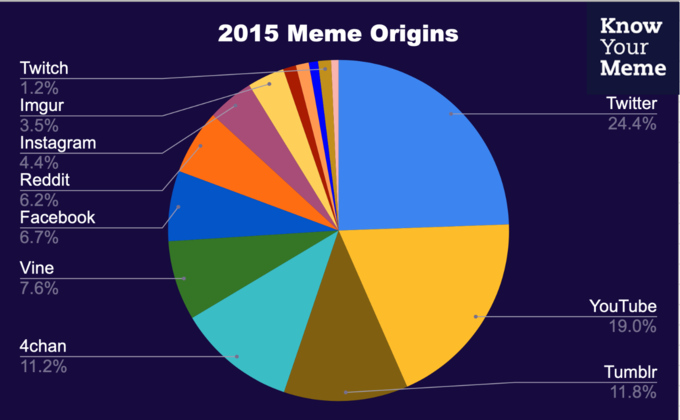
In 2015, it's worth noting that Facebook had around 1.4 billion active users, while Twitter had just over 300 million and was worried about its future. The average Twitter user might be more engaged than the average Facebook user is, and the same principle might explain the perennial relevance of 4chan and Tumblr. Communities that produce in-jokes, welcome creativity and breed a strong sense of identity are hotbeds for meme production.
Reasons other than higher user engagement on Tumblr or Twitter might explain why they consistently outpace Meta's Facebook and Instagram, however.
First, from the beginning, Facebook was a pretty official place. People used their real names, posted real pictures of themselves and interacted with people they actually knew in real life — conditions weren't necessarily as ripe for tomfoolery and memeing.

Second, many younger people began to fully surrender Facebook to the boomers at some point circa 2015, and it has only slipped further into their grasp since then, according to PEW Research. A third possible reason is the platform's controversial algorithm, which is purported to work against creatives on both Instagram and Facebook.
2015 Meme Spotlight: Unexpected John Cena
One memeing maneuver that never seems to get old is the bait-and-switch. Just like in the days when friends might prank each other with mysterious links in emails or IMs that would then lead to a Rickroll or an explicit website, we still love to trick the clicks of unsuspecting people.
Perhaps nothing was more expectably unexpected in 2015 than Unexpected John Cena — a legend then and a legend now. John Cena, of course, is a very prominent professional wrestler and actor. His entrance music is iconic and so are his outfits. But like many memes of the mid-2010s, it veers towards absurdism.
Originating on Vine, the internet's obsession with professional wrestler John Cena and his intro music seems to come from an appreciation of pure chaos. The meme doesn't really make a ton of sense (one specific moment from a television broadcast where an announcer declares Cena's entrance gets spliced into clips that have nothing to do with him) but part of the meme's humor is in the fact that it just keeps happening across so many places.
Meme humor tonally begins to distinguish itself from IRL humor by turning more absurd, more nonsensical and more daring. It's not really as accountable to a broad audience because everybody's posting into an echo chamber, and the incentives of the scene trend towards shock, insiderness and weirdness. Also, a meme is pretty low-commitment compared to other forms of comedy since you can post it anonymously, it costs nothing to make or publicize, and it doesn't take very long to create. Under those conditions, there is nothing to keep you from experimenting wildly.
Where Did Memes Come From In 2016?

There doesn't seem to be much difference between the 2016 and 2015 charts, but that doesn't mean things weren't changing. The internet stood poised between a primarily mobile and primarily lap-bound experience. Certain divisions remained between normies and the dank meme elites (see below).

2016 was the year Vine died. While the app had over 200 million active users that year, it never actually made a profit.
This isn't unusual in the tech sector, where many companies take years to build a user base and give investors a return. But for Twitter, Vine's parent company that was already facing its own problems, the property was apparently just too much dead weight.
But Vine left a deep mark on the internet's soul. Vines were a product of the smartphone and helped to establish the kind of filming grammar we now associate with that technology: the close-up intimacy of the self-facing camera paired with swift and jagged editing. Most of all, Vine's addition of a loop, essentially treating every video on the platform like a GIF, laid the roadwork for what was ahead.
But what happened to the Vine stars? A number of them, like the brothers Logan and Jake Paul, jumped to YouTube and made longer-form content. A few more musically inclined ones found a home on Musical.ly, TikTok's parent app. But Vine remains relevant as long as we remember the blessings it brought.
2016 Meme Spotlight: We Are Number One
We Are Number One is a viral video based on a clip from an Icelandic children's television show called LazyTown, which inspired a slew of memes. The loud, outlandish characters and lyrics led many to ironically embrace and appreciate it as adult entertainment. In a pattern frequently seen before and since — what began as an ironic and detached appreciation turned increasingly sincere and increasingly unhinged.
First posted to YouTube in 2014, the video of villain Robbie Rotten explaining to three clones of himself how to catch a superhero picked up popularity in 2016 after it began to circulate on Facebook. Particularly, the facial make-up and costume of Robbie Rotten earned considerable attention. Parodies on YouTube, Facebook and Soundcloud merged the video with other media, playing up the absurdity and wackiness of the costumes and music. Reddit's /r/dankmemes declared Robbie Rotten "the meme of the year."
The meme took a turn, however, when it was revealed to the general public that the man behind the meme, actor Stefán Karl Stefánsson, had fallen ill with cancer. His co-stars and others asked fans to contribute to a GoFundMe page for Stefánsson. On the subreddits that shared Robbie Rotten memes the most, posters organized financial and emotional support for the actor.


Stefánsson died in August 2018, and online fans of the memes involving Robbie Rotten started a campaign to up his YouTube subscriber account to over one million, in honor of his life. In 2018, /r/dankmemes again designated Robbie Rotten "meme of the year."

The response of meme communities to Stefánsson's death showed a kind of emotional attachment that surprised people who thought memes were just funny things on the internet. Through his art, Stefánsson created something which meant a lot to people and rendered their lives richer and fuller. The meme creators who riffed on his performance on LazyTown also made something moving enough to inspire people to donate money, form community support networks and take part in collective rituals of grief and remembrance.
Where Did Memes Come From In 2017?

In 2017, Twitter found itself at the center of almost every national political conversation, in large part because most news stories began as a tweet. It might be possible as well that Twitter’s November 2017 decision to increase the character limit from 140 to 280 played a role in increasing the amount of memeing. The outsize presence of the President of the United States on the platform also played a part in centering Twitter.
For the first time, phone-oriented Instagram outpaces laptop-oriented Facebook as a site of origin. Additionally, 4chan slips into an ever-smaller slice of the pie, perhaps reflecting its increased marginalization.
2017 Meme Spotlight: Mocking SpongeBob
In 2017, we saw the popularization of a variety of SpongeBob SquarePants images and reactions on Twitter. Often, SpongeBob memes came from well-known episodes of the classic show, some of them from as far as two decades back. On May 4th, 2017, a Twitter user posted the first recorded instance of the Mocking SpongeBob format, representing themselves reacting to children.

The next day saw the meme develop further, with the addition of alternating capital and lowercase letters to mark a mocking tone paired with dialogue for SpongeBob to react to. In the next few days, publications like Teen Vogue and The Daily Dot covered the meme as it exploded online.
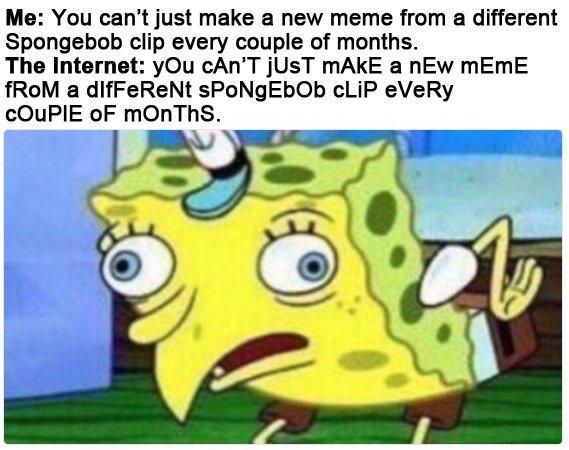
Mocking SpongeBob became a tool that could represent a certain emotional response to a disliked person or position and prop up an argument. It was like a big emoji, indicating the way a poster felt and how you, reading it, should also feel. Mocking SpongeBob was a way of enlisting an audience to agree with an author on finding something or someone ridiculous — the perfect meme for a platform defined by its embrace of beef, flame war and the "discourse."
Where Did Memes Come From In 2018?

In 2018, a newcomer emerges on the meme scene, at first represented by a slender purple slice: TikTok. Promising to do what Vine did but with a more addictive algorithm and no six-second limit, the Chinese social media app made an aggressive play for the attention of the masses. By 2018, the quality of phone cameras was able to accommodate this most mobile-oriented of all platforms. For a brief background, it's worth noting that TikTok was rebranded from Musical.ly by Bytedance this year as well.
TikTok is defined by its combination of a video-sharing platform with a mobile-first interface and an addictive algorithm. Like Vine, TikTok had a length limit on videos, which was first 60 seconds but has since then been bumped up (first in 2021 to three minutes, then in 2022 to 10).
The app also offers users access to all types of editing tools, allowing them to manipulate the sound, tint and pacing of videos as easily as they would apply an Instagram filter. TikTok memes range from certain trends in the subject matter of videos to certain sounds and songs that come to be used a particular way, as well as text-centric copypastas. The app can essentially make use of almost everything meme related.
2018 Meme Spotlight: Big Chungus
Perhaps no meme represents the 2018 status of the meme ecosystem better than Big Chungus, which emerged synergistically from several platforms. The original image of a hefty Bugs Bunny started spreading on 4chan in non sequitur contexts. Screenshots of 4chan threads featuring the character were then popularized on Imgur, Reddit and Facebook.
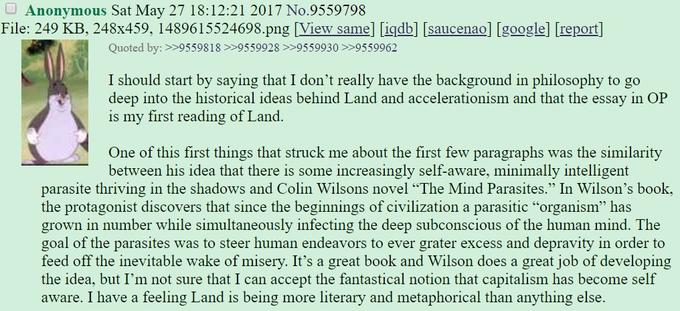
The first meme combining the image of a large Bugs Bunny with the Big Chungus moniker (a phrase used often by YouTuber and gaming journalist Jim Sterling years earlier) was produced in March 2018 on Reddit. There, it rested in obscurity for several months on a seldom-visited subreddit until it was reposted to the prominent /r/comedyheaven in December when it took off and spread to Twitter within a week.
Big Chungus required all of the platforms to work together in order to rise and stands as evidence of how connected they were. Users moved Chungus memes from 4chan to Twitter to Reddit to YouTube and then back again. While the early image of chubby Bigs Bunny on 4chan greentexts didn't have the same meaning as the Big Chungus memes later posted to Reddit, the DNA was there. Eventually, the U.S. Army even named a piece of artillery after Big Chungus.

This pattern occurs frequently. A meme originates on one platform, but as it gets to be well-known, it will inevitably jump through several others. Often, there will be one platform in particular where a meme finds its most exuberant and widespread expression, and that platform isn't always the place it originated.
Big Chungus and memes like it pose something of a methodological question for Know Your Meme and anyone else looking to study memes: What is the origin, actually? Should we record Big Chungus as coming from 4chan because the image was first funny there, or record it as coming from Reddit because the image and caption first met there? Further, when exactly does one meme turn into another distinct meme? The picture is muddled, but generally, we choose the first complete and recognizable version of a meme as the origin, while also noting its background development.
Where Did Memes Come From In 2019?

According to our database, 2019 was peak Twitter. The other platforms continued to post healthy numbers, but none rivaled the bird app for prominence and clout.
Platforms that once dominated the meme scene were reduced to slender slices of the pie chart by 2019. 4chan, though still impactful, had been written off as a cesspool by much of the mainstream internet, generating about two percent of meme origins. Formerly dominant Tumblr generated about one percent.
The fall of Tumblr and 4chan is likely one of those historical questions like the fall of the Roman Empire, which has a thousand different answers and will be debated forever. Factors such as the transition to a more mobile-oriented internet that favors phone-first apps like TikTok and Twitter might be partially responsible. You could also blame specific business decisions, such as Tumblr's banning of pornography in 2018 or 4chan's moderation policies. Culture might play a part too, as many people were just turned off by their vibes. Ultimately, we might never know.
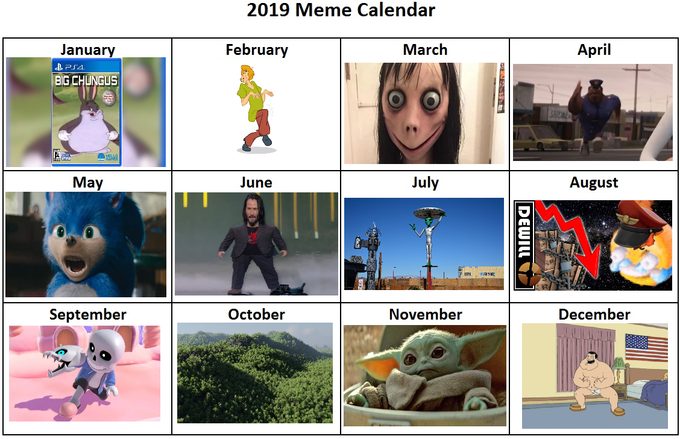
2019 Meme Spotlight: Woman Yelling At Cat
If the late 2010s are remembered for anything, it may be as the golden age of object-labeling memes. Formats that use images to represent the relationships between ideas, people and feelings became a kind of internet hieroglyphics, communicating pretty sophisticated thoughts, jokes and positions in a very small space.
Woman Yelling At A Cat, like Big Chungus, came from several sources. The image of the woman (Taylor Armstrong) yelling is a screen grab from a 2011 episode of The Real Housewives of Beverly Hills, while the image of the cat, named Smudge, began on Tumblr in 2018. The two images were then combined together in May 2019 by a Twitter user who commented on the power of seeing them paired, and thus, the meme was born.

The format, even when on other platforms, keeps its "Twitterness" — the characters look the way they'd appear in a Twitter post with side-by-side boxes. The meme, however, is limitlessly repurposable. Smudge can stand for a real cat and Taylor Armstrong for the memer, but Smudge can also just as easily stand for the memer themselves and Taylor Armstrong for their mom. The meme can also express both complicated beef on a gaming subreddit and deep concern about the direction the world is going in.

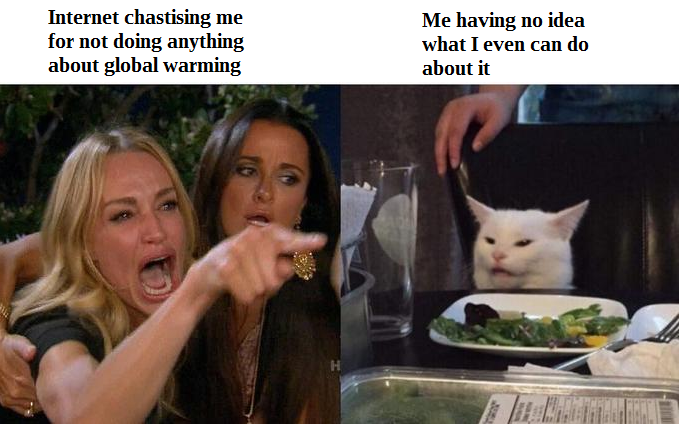
The use of the meme in many of these instances is not "funny" in a conventional way. What it's really doing is explaining a thought. This and other object-labeling meme formats operate like idioms. These memes are logical frameworks that communicate a relationship between things and can be applied to many situations. They stick around because they can describe situations and emotions more swiftly and poetically than our own words can.
Where Did Memes Come From In 2020?

TikTok’s 13 percent jump between 2019 and 2020 is more drastic and rapid than any other year-by-year shift in meme origins recorded in the data. Since 2020 wasn’t very long ago, you probably remember the time in quarantine when everybody started getting on TikTok or getting grumpy at other people who were on TikTok.
This, notably, also coincided with the emergence of zoomers as a cultural force. Interestingly, Twitter, whose user base tends to skew millennial, still looms large, representing that generation’s continuing influence on internet culture.

TikTok didn't just rise on its own, however. It was and is enmeshed in an ecosystem. TikToks were reposted to Instagram and Twitter, just as tweets and Instagram posts were reposted to TikTok.
2020 Meme Spotlight: Coffin Dance
Coffin Dance, a TikTok meme from 2020, shows the kind of platform entanglement that surrounded the new video sharing app.
https://www.tiktok.com/embed/v2/6797826753340394757
Like with Big Chungus a year earlier, the component parts of the Coffin Dance meme existed elsewhere. The audio track "Astronomia" by Tony Igy was already circulating, and the video of the dancing pallbearers was originally posted to YouTube in 2019, celebrating a Ghanaian funeral tradition.
Video and audio were combined in late February 2020 on TikTok, and the meme took off in March. It was frequently used to punctuate FAIL compilations, marking the demise of a character introduced in preceding footage. In the following weeks, the meme made it to Twitter and eventually to Facebook, where even the Poster-in-Chief Donald Trump shared a meme of it featuring the campaign logo of Joe Biden on the coffin.
Earlier in the year, of course, Trump's administration floated the idea of banning TikTok in the United States, joining India (which actually did ban the app). In both cases, tensions with China and concerns about the handling of user data by a company subordinate to the Chinese state were listed as reasons why.
Where Did Memes Come From In 2021?

Last year saw the trends of 2020 amplified. TikTok and Twitter dominated, each taking up about a third of meme origins on the site, while the other platforms together comprised another third.
A reason for that dominance might have to do with the fact that both TikTok and Twitter are first and foremost constructed for mobile, TikTok especially so. Trying to use either site on a laptop is arguably an inferior experience. Most of the other sites and platforms listed (with the exception of Instagram) have decent user interfaces on mobile but were originally created for a laptop or desktop screen. In 2021, the wider availability of smartphones around the world meant that most recreational screen time was taking place on that kind of device rather than another kind.
2021 Meme Spotlight: Pondering My Orb
A 2021 meme that speaks to the continuing development and evolution of meme culture is Pondering My Orb, a meme that came to be recombined with similar meme formats stretching back over many years. The central character, a sage pondering his orb taken from the cover of a 1988 RPG fantasy gamebook, first appeared on Twitter in October 2021.

From there, many of the top-performing posts of the meme recombined it with past meme templates, such as Boy and Girl Texting, snowclones and phrasal templates, Soyjaks like Two Soyjacks Pointing and much, much more.

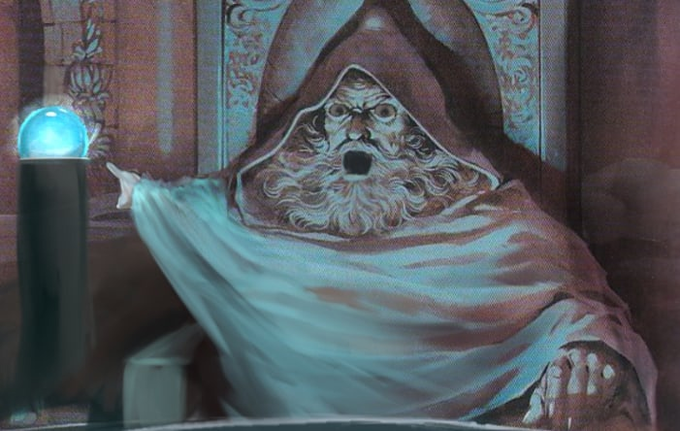
These meme combinations rely on an audience that has been looking at memes for several years across several different platforms. The chain of references becomes increasingly long. It seems like an obligatory step for any meme achieving virality today is an encounter and remix with past memes.
In a sense, this is no new development. Early memes relied just as much on generating obscure references that could be exploited and re-exploited to signal membership in a particular online clique. But the amount of meme history by 2021, and the broader public's familiarity with it, mean that memes have become increasingly synthetic, constructed of past references to memes created on other platforms at other times.
Where Are Memes Coming From In 2022?

This year is only partway through, but so far, it’s the first year where TikTok is the number one platform for meme origins. The only two other platforms to hold that number one slot for any considerable period of time (YouTube and Twitter) each lost it at what you might consider important hinge moments in our society’s romance with technology.
YouTube fell out of number one as smartphones become the dominant means used to access the web, and Twitter fell out of the number one slot during the coronavirus pandemic, when much of daily life and professional life moved 100 percent online.
This seems to indicate that what it may take to dislodge TikTok would be a similarly significant event, such as the downloading of everybody's brain into the Metaverse.

The graph above sums up our data by looking at it across time. Each line represents a social media platform, with the Y axis showing the percentage of meme origin shares it enjoyed in any given year (seen along the X axis).
The graph may make it seem like the platforms are competing for attention share, but it's important to remember that the origin site of a meme is only part of its story. All the platforms coexist in an ecosystem, and most people post and maintain a presence across several of them.
Also, certain types of memes and communities are overrepresented. Our site skews American and certainly English language, although we are making increasing efforts to expand our range and depth in covering memes from other countries, so what we've got here is more of a sample of internet culture as it was for a specific group of people rather than a global account.
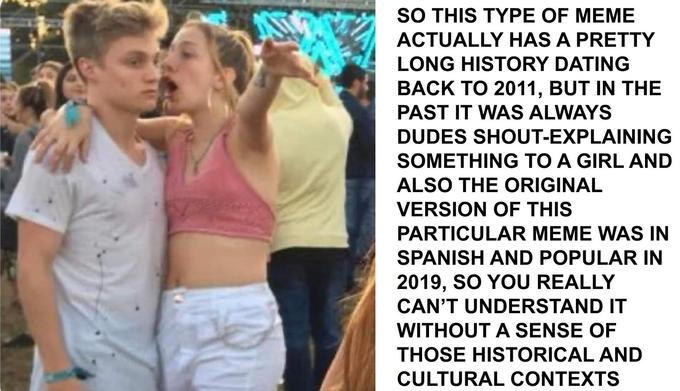
The data isn't perfect, but it's safe to say that nothing like this exists anywhere else. Over its years as the internet's largest and most accessible cultural encyclopedia, Know Your Meme has witnessed significant changes in the landscape of the web and the way that born-digital ideas, jokes and art move around online. The articles and memes recorded on the site can be a valuable tool for people working on a wide variety of questions.
Conclusion
The striking amount of change in our meme origin data over the years indicates social media platforms are anything but stable. There is no reason to think the way today's digital media ecosystem operates is what it will look like in the near future. Radical change is not just possible, but probable.

In a decade, we could easily have a totally new set of platforms, and some of the decisions which will set those platforms up are being made today. The social internet is built of eggshells and paper-mache, not concrete. It's a cliche to say, but what you post, like, comment and share does matter.
Memes are more than just funny — they can tell us a lot about the way we and the people around us see the world, exposing who and what is influencing the way that world looks and casting light on the anxieties and absolutisms which fill up life on the feed.
And, yes, memes are also very funny.

Comments ( 2 )
Sorry, but you must activate your account to post a comment.